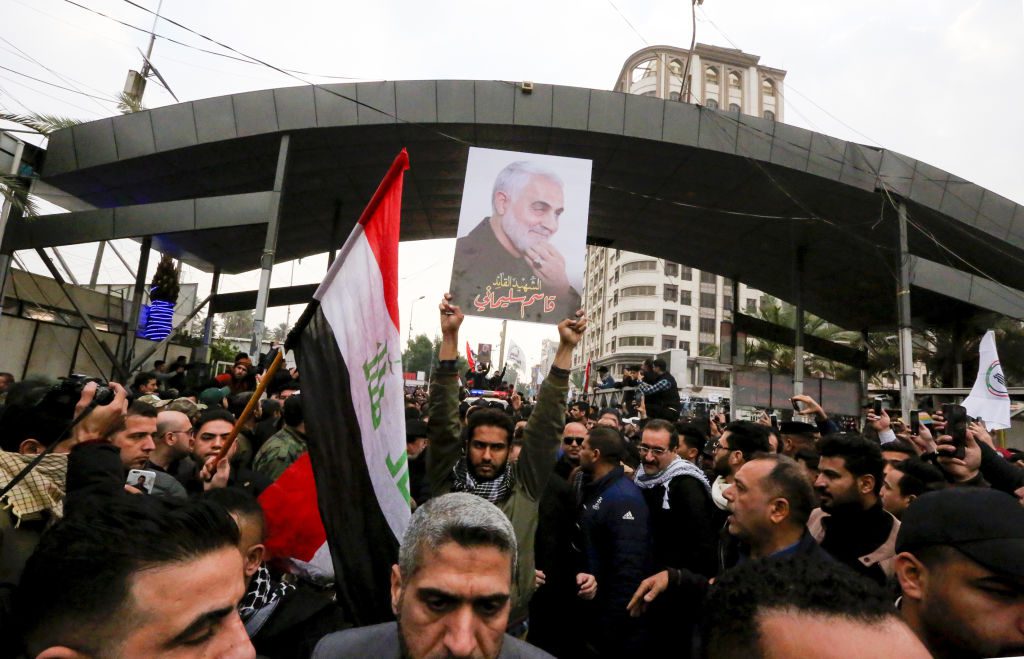If Baghdad Wants Us Out, Then We Should Go

Fifteen years after the U.S. invaded Iraq to turn Saddam Hussein’s dictatorship into a beacon of democracy, Iraq’s parliament amid shouts of “Death to America!” voted to expel all U.S. troops from the country.
Though nonbinding, the expulsion vote came after mobs trashed the U.S. embassy in an assault that recalled Tehran 1979.
What provoked Iraq’s parliament into demanding the ouster of all U.S. troops?
First, the five December strikes on Iraq’s Popular Mobilization Forces in retaliation for a dozen Kataib Hezbollah rocket attacks on American bases, which killed a contractor and wounded four U.S. soldiers.
Then came President Donald Trump’s decision to launch a drone strike and kill Iranian general Qassem Soleimani at Baghdad International Airport. Killed in the same strike was the Shiite Iraqi leader of Kataib Hezbollah.
During his return flight to Washington Sunday, Trump warned Iraq: follow through on your demand that all U.S. troops get out, and we will insist that Baghdad repay the money we just spent on a major air base.
Moreover, said Trump, if Iraqis expel U.S. troops, then we will impose upon them “sanctions like they’ve never seen before, ever. It’ll make Iranian sanctions look somewhat tame.”
Where do we stand now in Iraq?
Though Sunnis and Kurds abstained, the Iraqi parliament has voted to expel all our troops. The State Department has urged U.S. civilians to flee Iraq. 82nd Airborne units have moved into the region to protect the U.S. embassy. American troops fighting ISIS alongside Iraqis have separated themselves and stood down. In Iraq, the war on terrorism is on hold.
Across the Middle East, U.S. diplomats, soldiers, and civilians are on alert. The acting prime minister of Iraq, in an echo of Tehran and the radical Shiites, is demanding that all 5,200 American soldiers in Iraq depart.
How can our troops, detested by the Shiite militias and their thousands of fighters, unwanted by the Iraqi parliament, the acting prime minister, and much of the Shiite majority, remain safely inside the capital city of Baghdad or the country?
What a difference a presidential decision can make.
Two months ago, crowds were in the streets of Iraq protesting Iran’s dominance of their politics. Crowds were also in the streets of Iran cursing that regime for squandering the nation’s resources on imperial adventures in Iraq, Syria, Lebanon, and Yemen. Things were going America’s way.
Now it is the Americans who are the targets of protests.
Over three days, crowds numbering in the hundreds of thousands and even millions have packed Iraqi and Iranian streets and squares to pay tribute to Soleimani and to curse the Americans who killed him.
As emotions are running high and America’s friends in the region are mute, the twin goals of Iran and its militia allies appear clear.
Tehran wants to avoid a war with the United States, but to direct the passions of the moment toward forcing an expulsion of the Americans from the Middle East, beginning with their ouster from Iraq.
Thus it has signaled that its retaliation, its revenge for the death of Soleimani, a military man, will be proportionate. Tehran is telegraphing an attack on the U.S. military. Hassan Nasrallah, the head of Hezbollah in Lebanon, has called on his followers not to attack innocent Americans in the region but to zero in on U.S. military targets.
Oddly, what the America haters of the Middle East seek is what Soleimani wanted, and what Trump promised in his campaign of 2016—an end to U.S. involvement in the forever wars of the Middle East.
Perhaps, rather than sending troops into Iraq and Kuwait to defend other troops already there, we should accede to the local nationalist demands, start bringing our forces home, and let the Iranians, Iraqis, Libyans, Syrians, Yemenis, and Afghans settle their quarrels.
Despite the rage in Iran over the killing of Soleimani, the political imperatives that existed before last Friday’s drone strike remain.
Iran does not want war with the United States. And Trump wants no war with Iran.
But Iran made a mistake in its extrapolation from that truth.
Assuming that because Trump did not want war, he would recoil from a fight, Soleimani believed he could kill Americans with impunity, as long as his fingerprints were not on the murder weapon.
Killing Soleimani was just. But what is just is not always wise.
Yet his killing restores Trump’s credibility as a Jacksonian who avoids wars but who, wounded, will stab the enemy who cut him.
Trump has a red line. It is not shooting at American drones but shooting at American soldiers, the drawing of American blood.
The message the rulers of Iran should have received?
If they retaliate for Soleimani by killing American soldiers, diplomats, or civilians, using either Iranian troops or proxy militias, Trump will retaliate against Iran itself.
Otherwise, “Come Home, America,” George McGovern’s slogan from the 1972 presidential campaign, has rarely seemed more relevant.
Patrick J. Buchanan is the author of Nixon’s White House Wars: The Battles That Made and Broke a President and Divided America Forever. To find out more about Patrick Buchanan and read features by other Creators writers and cartoonists, visit the Creators website at www.creators.com.
Comments